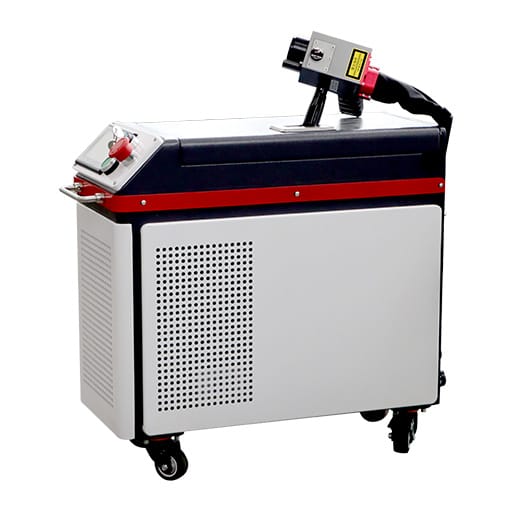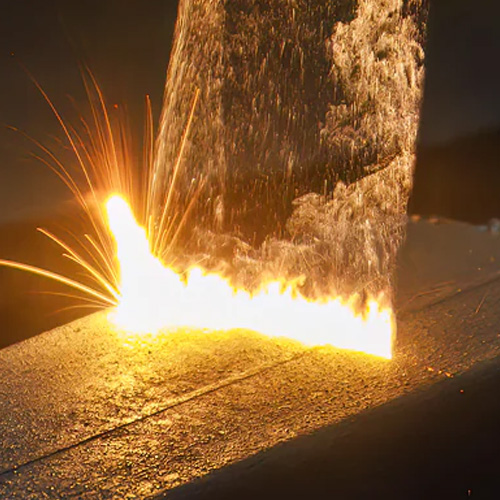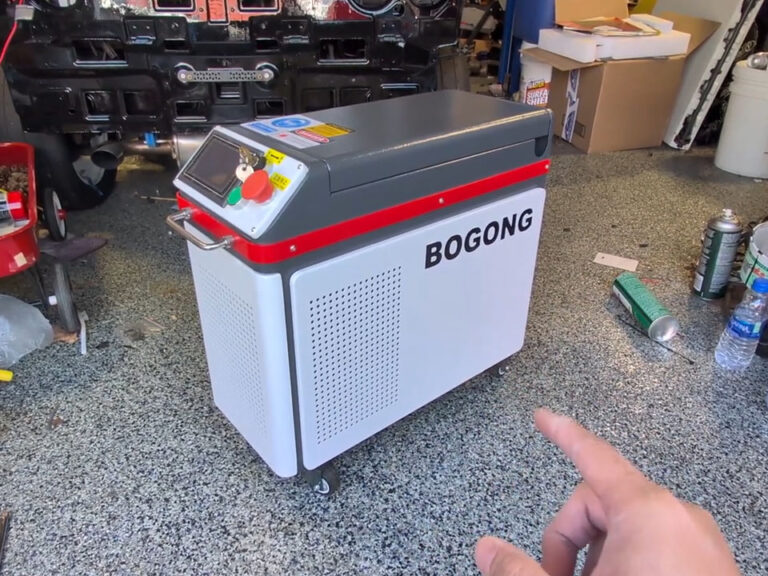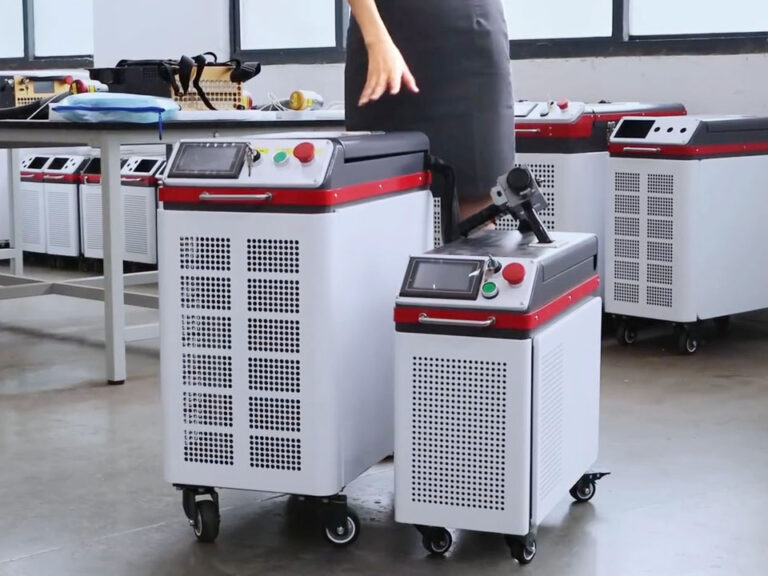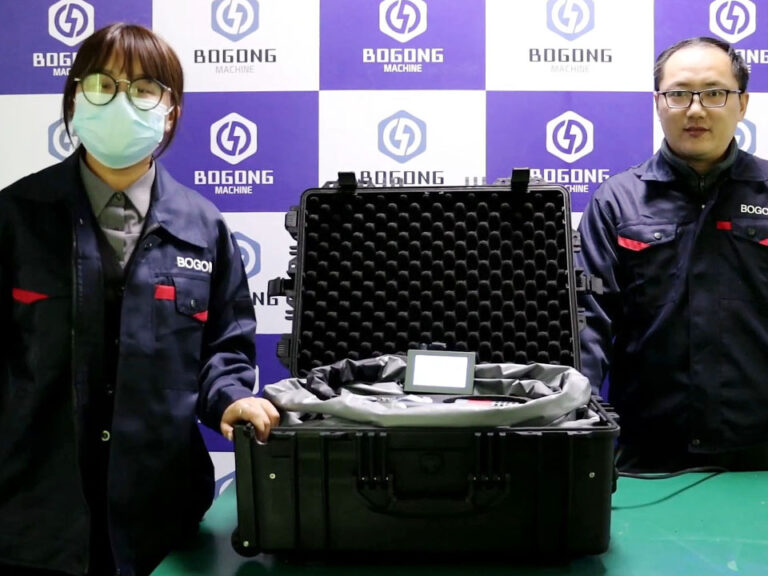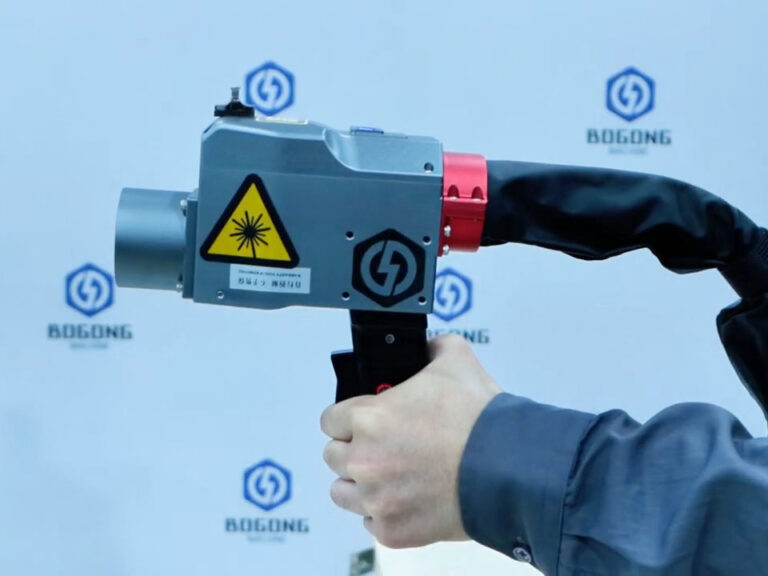-
+86 156 6587 0861
-
Shunhua Road, Jinan City, Shandong
Understanding Fiber vs. CO₂ Laser Cleaning Machines
You walk into a shop floor. Two laser heads stand side by side. One glows with fiber-optic simplicity, the other buzzes with gas-tube complexity. Which do you choose — and why? The answer, if you peel back the layers, is as much about physics as it is about choice, cost, and tradeoffs.
In many trade journals you’ll find side-by-side spec tables comparing fiber vs. CO₂ lasers in terms of wavelength, efficiency, cost, and maintenance. But that’s the easy part. What I want to bring you here is a deeper, human-centric view: the hidden constraints, the real decision-points, the nuance nobody writes into marketing material.
Let’s go past the spec sheet together.
Table of Contents
A Primer: Two Very Different Beams, Two Very Different Stories
At a high level:
- Fiber lasers generate light in a solid-state medium—optical fibers doped with rare-earth elements (e.g. ytterbium). The beam is delivered via fiber optics.
- CO₂ lasers are gas lasers: an electrical discharge excites a mix of CO₂, nitrogen, helium (and sometimes other gases) in a tube. The beam is directed through optics (mirrors) to the work surface.
Because of those foundational differences, their “personalities” diverge. How they interact with materials, how robust they are, how you maintain them, even where they break—these all differ.
To see which is better for you, we must explore those differences in depth.
How They Behave Differently — When Physics Meets Production
Below are the major axes where fiber and CO₂ diverge — and where your real-world decision lives.
Wavelength & Absorption: The Heart of the Matter
Fiber lasers emit around 1,064 nm (or roughly in the near-infrared). CO₂ lasers emit around 10,600 nm (mid-infrared).
Why does that matter? Because absorption depends heavily on wavelength — how much the contaminant or substrate “soaks up” the beam energy versus reflecting or letting it pass through.
- Metals (steel, aluminum, copper, brass) tend to absorb fiber-wavelength energy better and reflect more of CO₂’s longer wavelength. That means fiber can deliver more effective energy into metallic surfaces.
- Conversely, CO₂’s wavelength is more strongly absorbed by many non-metal, organic, polymer, and soft materials (plastics, resins, coatings, rubber) than fiber. That gives CO₂ an edge on cleaning or ablating those materials.
So the first question you must answer: what kind of materials and contaminants are you mostly dealing with?
If your workload involves metal surfaces, rust, oxide layers, metallic deposits, fiber likely gives you more “bang per watt.” If your challenges include plastics, coatings, residues, paints, polymers, CO₂ may outperform in removal (or at least in synergy) when its absorption advantages align.
Power Efficiency & Thermal Losses
Efficiency is often the “back-of-house” battleground.
- Fiber lasers can convert a much higher percentage of input electrical energy into useful laser output—some sources quote ~40-45 % efficiency.
- CO₂ lasers tend to be less efficient (often in the 10–20 % range) because a lot of energy is lost in gas heating, in mirror losses, and in the optical path.
This difference matters when you scale operations: your power bill, your cooling demands, your operational budget— fiber tends to scale more favorably.
Beam Delivery & Optical Complexity
This is where “machine personality” really diverges.
- Fiber lasers deliver the beam through fiber optics—a neatly sealed, flexible path. Less open beam path, fewer intermediate mirrors, less alignment drama.
- CO₂ lasers require multiple mirrors or enclosed beam paths; often these are in bellows, mirrors, or complex tubes. Each mirror is a potential alignment point, dust trap, or failure mode.
Thus, fiber systems tend to demand less maintenance in terms of alignment and mirror cleaning. Over time, that can yield lower downtime and fewer surprises.
Spot Size, Focus, & Precision
Because fiber’s wavelength is shorter, you can focus the beam tighter (a smaller spot). That gives higher power density (more energy per area) and finer detail in ablation.
That lets fiber lasers operate more precisely, especially on small or delicate features. But that precision also demands more careful parameter control.
CO₂, with its longer wavelength, tends to have a larger minimal spot size and broader heat-affected zones (if not managed). This means for tight tolerances, fiber usually wins, but for broader sweeps or thicker coatings, CO₂ sometimes holds its own.
Pulsing & Thermal Management
Modern fiber lasers can generate ultra-short pulses (nanoseconds, picoseconds), enabling rapid ablation with limited thermal diffusion. That means less risk of heat damage to the substrate, less melting, less unintended heating.
CO₂ lasers often run in continuous or longer-pulse regimes; their thermal diffusion zones are larger, so you must carefully tune dwell time and scanning strategies to avoid overheating the substrate or damaging edges.
What Each Is Best At — Use-Cases & Strengths
To help anchor this, here’s a rough “natural domain” map for each:
| Domain | Fiber Laser Strengths | CO₂ Laser Strengths |
|---|---|---|
| Metal surfaces, rust, oxidation, scale removal | Strong absorption, tight focus, efficient power use | Less competitive but sometimes helpful when coatings are thick |
| Coatings, paints, polymers, residues | Good, but absorption may lag | Better absorption for organic/soft materials |
| Fine detail, micro-cleaning, precision features | Excellent | Challenged by spot size |
| Throughput & cost scaling | More efficient, lower power waste, less maintenance burden | Higher power draw, more optical overhead |
| Mixed-material or hybrid jobs | May need auxiliary methods for some non-metal parts | More forgiving with organic/coating portions |
Your job is to map your real workflow against this matrix.
Hidden Tradeoffs & Decision Pitfalls: What Vendors Don’t Always Tell You
Now we come to the guts — the defensive thinking you want if you’re evaluating proposals or RFPs. These are the tradeoffs often obscured in marketing gloss.
Narrow Parameter Windows
Because fiber excels in precision, its “safe operating window” can sometimes be narrow. Push too hard, and you risk damaging the substrate. Fail to hit enough energy, and contamination stays. You need skilled tuning, repeatable recipes, and stability.
CO₂ may offer a bit more thermal “forgiveness” in some thicker or forgiving use cases—but that comes at cost of precision and efficiency.
Geometry & Accessibility
Even the best laser can’t reach shadows or undercuts. Complex part geometry may demand multi-axis articulation, repositioning, or hybrid methods. If your workpieces are complex, you’ll need to ensure the laser path can “see” the surface in all critical zones. That constraint is the same for both fiber and CO₂, though fiber’s tighter spot sometimes gives you more options.
Substrate Sensitivity & Heat Risk
If your workpiece is delicate—very thin, composite, coated, or with heat-sensitive zones—fiber’s ability to localize heat is a huge advantage. CO₂’s broader heat zones make it riskier for parts that can’t tolerate thermal stress.
But, fiber’s precision becomes a double-edged sword: if alignment drifts, optics degrade, or contamination creeps in, you can introduce micro-damage you might not see until later.
Maintenance & Lifecycle Burden
Fiber lasers generally win in long-term maintenance: fewer mirrors, fewer alignments, less delicate beam paths. But they still demand cleanliness, optics care, calibration, and monitoring.
CO₂ systems—because of their mirror chains, gas tubes, and exposed optics—require more frequent alignment checks, mirror cleaning, gas management, and failure recovery.
In lifecycle proposals, include hidden costs: mirror replacements, optical cleaning downtime, misalignment rework, gas consumption, and calibration. Those often dwarf the cheaper machine price.
Vendor Claims vs. Real Parts Trials
One of the best defenses is this: insist on real part trials. Don’t let vendors sell you on “a coupon or plate test” only. The differences between that and your real geometry/contaminant complexity can be dramatic. Ask for side-by-side cleaning of your worst-case parts with both fiber and CO₂ systems, full testing of substrate integrity, and durability checks.
How to Choose (From a Place of Depth, Not FOMO)
Here’s a decision framework I recommend, based on real-world lessons:
- Audit your material mix & contaminants Chart your workloads: what percentages are metal? coatings? polymers? how thick are contaminant layers?
- Test worst-case parts first Use your toughest examples—thick deposits, complex geometry, mixed materials—for pilot trials.
- Demand parameter transparency You need to see parameter ranges, not just “it works on our sample.” Understand pulse width, power, scanning speeds, overlap.
- Compare total cost of ownership (TCO) Include: machine cost, power consumption, maintenance, optics replacements, downtime, consumables, calibration, training.
- Plan for drift, stability & recipes A good system isn’t one you tune once. It’s one you maintain, recalibrate, adapt. Ensure vendor support, modularity, and recipe storage.
- Don’t fear hybrid approaches Sometimes your best outcome is fiber + CO₂, or even fiber plus mechanical assist. Use the tool best suited to each segment of your workload.
- Project for the future Your workload might evolve. Select the option that gives you headroom for new parts, tougher contaminants, or mixed-material cleaning.
A Final Thought: The Decision Is Not Binary — It’s Contextual
There is no absolute winner; only what is better for your parts, constraints and scale. Fiber lasers tend to dominate when the workload is heavy on metals, when precision matters, and when you want long-term operating efficiency. CO₂ still holds relevance when your task mix includes many coatings, polymers, non-metals, or cleaning in bulk where extreme precision is less critical.
What separates great adopters from the rest is not that they picked the “best” laser, but that they picked the right laser for their evolving, messy real world — then built monitoring, feedback, and continuous improvement around it


